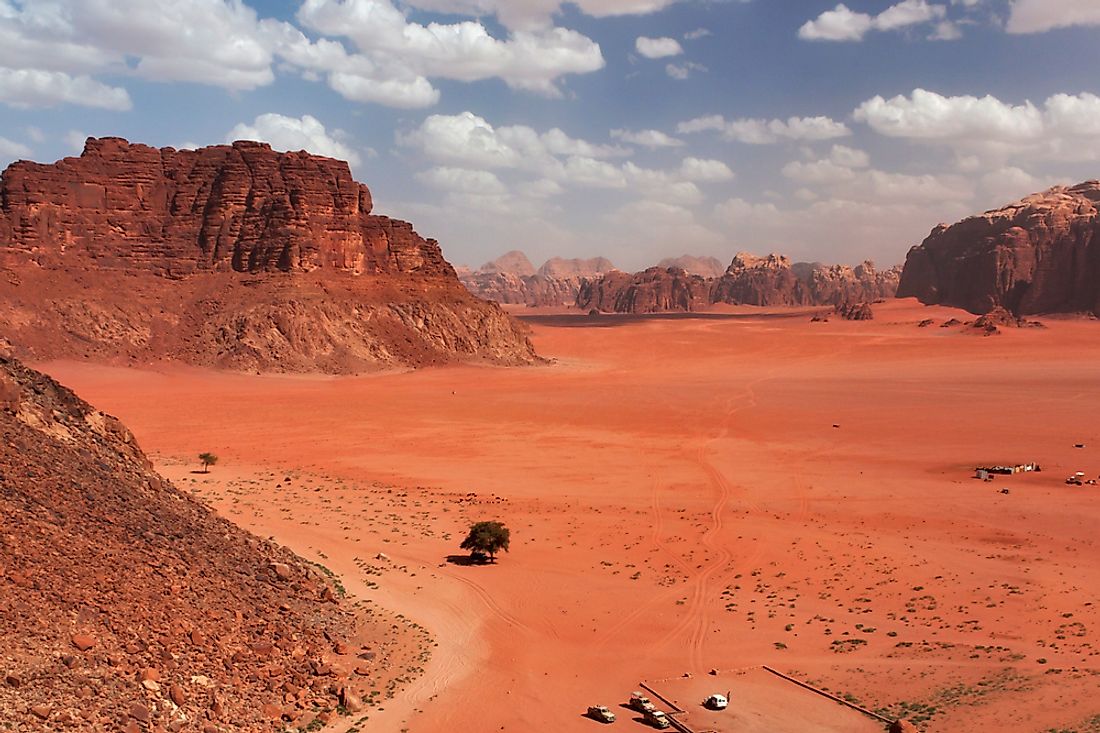What Is The Valley of the Moon?

Valley of the Moon or Wadi Rum is Jordan’s largest valley. Wadi Rum is an Arabic phrase meaning sand valley. Valley of the Moon is a one of a kind scenery that rarely exists in other regions. Granite rocks and sandstone grow above the valley. These geographical features rise to a height of 1,700 meters above sea level. Moreover, their occurrence makes the valley slopes steeply. The valley is filled with red sand and has arid climatic conditions as it experiences little rainfall. The Wadi Rum was confirmed as a preserved area in 1998.
History
Despite the fact that the environment of the valley appears to be unreceptive, nomadic communities lived there for ages. The Nabataeans for instance once lived in the Valley of the Moon in the early period. On departure, they left their mark in the form of temples, rock paintings, and graffiti.
"The Seven Pillars of Wisdom," a book by Thomas Edward Lawrence (a British archaeologist, writer, diplomat and military officer who fought in the 1917-1918 Arab Revolt) refers to The Wadi Rum severally in its content. However, it is not confirmed whether he was there or not. In the 1980s, the name "the Seven Pillars of Wisdom" was given to a rock formation in the Wadi Rum after the book (by Lawrence), but the seven pillars mentioned in the book does not have any relation with Wadi Rum.
Geography of Valley of the Moon
Wadi Rum is found at the center of the main valley. Jabal Umm ad Dami at 1,840 meters high is the topmost height in Jordan and is thirty kilometers to the south of Valley of the Moon village. One can see the red sea and the Saudi border at the peak of Jabal. Difallah Ateega, a Zalabia Bedouin from Rum was first to discover the Jabal Umm ad Dami.
The second highest elevation in Jordan is the Jebel Rum, which rises 1,734 meters above sea level. Jebel Rum is also the highest summit in central Rum. It lies in opposite direction as Jebel Um Ishrin, which is probably one meter lower. Another geographical feature in Wadi Rum is Khaz'ali Canyon. Images on cave walls created by incision, picking, carving, or abrading are found in Khaz'ali Canyon. These images can be traced to the ancient civilization in the Hejaz from the eighth century to near the time of Muhammad.
Wadi Rum village host Bedouin people, living in concrete houses and goat-hair tents. The inhabitants also use the four-wheel vehicles and have one school for girls and another for boys. In addition, one can also find shops and the control center of the Transjordan Paramilitary.
Wadi Rum has embraced a viable crop growing through the Wadi Rum Consultancy. This effort to make the desert green began in 2010 and permaculture professional, Geoff Lawton, have successfully managed the program.
Tourism and Travel
The chief source of earnings in Wadi Rum is eco-adventure tourism, which developed with the help of Zalabia Bedouin who worked with rock climbers and explorers. The Wadi Rum is now one of the significant day-tripper fascinations. The Wadi Rum has also been used as a background setting for science fiction films shot on Mars.











